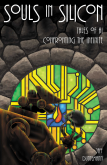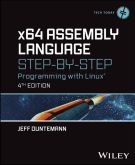If a task has to be done often enough, sooner or later somebody will automate it. And so it happened with a very common task that I’m glad I didn’t have to do the hard way: Restore Grub to the MBR after a Windows reinstall overwrote it.
Windows does not play nice with Linux the way Linux plays nice with Windows. When you install Linux on a hard drive that already contains a bootable Windows partition, Linux adds the Windows instance to the Grub bootloader menu, allowing you to choose which OS to boot on startup. On the other hand, when you install Windows to a hard drive that already contains a bootable Linux partition, Windows ignores the Linux partition and puts its own bootloader link into the master boot record (MBR.) At startup, the system boots straight into Windows. Linux is still there, but you don’t get to choose to boot into it at startup.
Getting Grub back into the MBR after a Windows reinstall isn’t hideously difficult, but it’s a bit of picky terminal work done from a LiveCD. The trick is knowing how. The canonical description of how to do it is borderline incoherent, including advice like “This method apparently no longer works. Use with caution (if at all.)” The information is all there, but you have to dig a little to make sense of it. (Being a Linux geek helps a great deal.)
There’s now an easier way that I wasn’t aware of the last time I had to reinstall Windows on a dual-boot system: The Rescatux LiveCD. It’s a Debian instance with some scripting added that puts up a wizard and automatically detects installed bootable partitions. It then rebuilds the Grub bootloader menu and points the MBR back to Grub.
A couple of cautions:
- The wizard is fairly terse. Don’t expect a great deal of handholding. If you don’t have any prior experience with Grub, read the documentation on the Web site. Then read it again.
- Give the wizard time to work at each step. When you click the OK button, the options reappear immediately, but when there’s some disk access to be done, the script goes off to work and doesn’t give you any indication that it’s working. It doesn’t take more than a few seconds. Be patient.
I failed to be patient the first time I ran Rescatux, and clicked something once too often. (I’m still not entirely sure what.) When I booted the system again, Grub ran and Ubuntu was listed, but this time Windows was missing. There’s some rough justice in that, I guess, but I need to get into Windows just as surely as I need to get into Ubuntu. So I rebooted back into Rescatux and ran the wizard again, giving it enough time to finish each step. Another reboot, and Windows was back in the Grub bootloader menu.
Supposedly Rescatux works with both Grub 2 (the current version) and “Legacy Grub,” V0.97. My system uses Grub 2, and thus I didn’t test its dealings with older Grub versions.
It’s still a little rough, but it saved me a certain amount of eye-crossing terminal work this afternoon, and that’s always a good thing. Be careful and read the doc before you begin, but having said that, I do recommend it.











